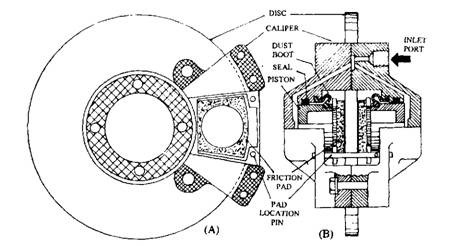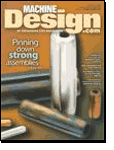Disc Brake Layouts

Disc-brake Assembly A disc-brake has a rotating cast-ion disc, bolted to the wheel hub and a stationary caliper unit. The caliper straddles the disc and is bolted to the stub-axle or swivel-post flange. It is made of cast iron in two halves (Fig. 28.25) and each half forms a separate cylinder block with the cylinder axis perpendicular to the disc. The two cylinders are connected together by drillings at the pressure faces of the two caliper halves near to the inlet port (Fig. 28.25B). A bleed-screw drilling also intersects at this junction Fig. 28.25. Double-piston-caliper disc brake Each cylinder uses a rubber sealing in the form of a ring located in a groove in the body and a hollow piston protected by a dust-cover. A friction pad in the form of a segment is bonded to a steel plate and is sandwiched between each piston and the disc face. These pads fit into slots formed in each half of the caliper housing and are held in position by retaining pins, or spring plates. The application o
